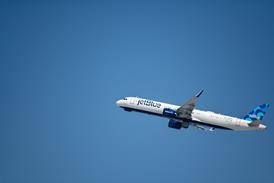A government-industry team has developed a laser pointing system to help develop mitigation techniques if pilots become temporarily blinded by laser beams from outside the cockpit.
The eye-safe device, mounted in a Boeing 737-800 full-motion simulator, will be used during tests to study the performance of air crews after being exposed to unauthorised laser illumination during critical phases of a flight.
Joining the US Air Force Research Laboratory's Human Effectiveness Directorate and the US Federal Aviation Administration in the development were Northrop Grumman Information Technology, Taboada Research Instruments and Cherokee CRC.
Collaboration between the FAA and the military started in earnest in early 2005, fuelled by reports of more than 100 incidents of laser beams being aimed at commercial aircraft.
In April 2005, the FAA reported that a Delta Air Lines Boeing 737-300 first officer on approach to Dallas/Fort Worth airport received eye injuries from a laser aimed into the cockpit from the ground.
The FAA previously determined that special goggles for pilots to wear or filters in cockpit windscreens were either not practical or unsafe.
Officials at Brooks City Base in San Antonio, Texas, and at the FAA's Mike Monroney Aeronautical Centre in Oklahoma City, Oklahoma, developed the pointing system and integrated the eye-safe laser into the FAA's 737-800 flight simulator in Oklahoma City.
With the pointing system in place, researchers plan to monitor pilots' reaction to the beams and develop flight safety measures to counter the threat.
"The team's technological contribution to the flight simulator will lead to improvements in cockpit procedures so commercial and military pilots can concentrate on safely flying their aircraft should a laser be pointed at them," says Jim Barry, vice-president of technology integration and applications for Northrop Grumman's IT defence group.
Related story
Source: Flight International























